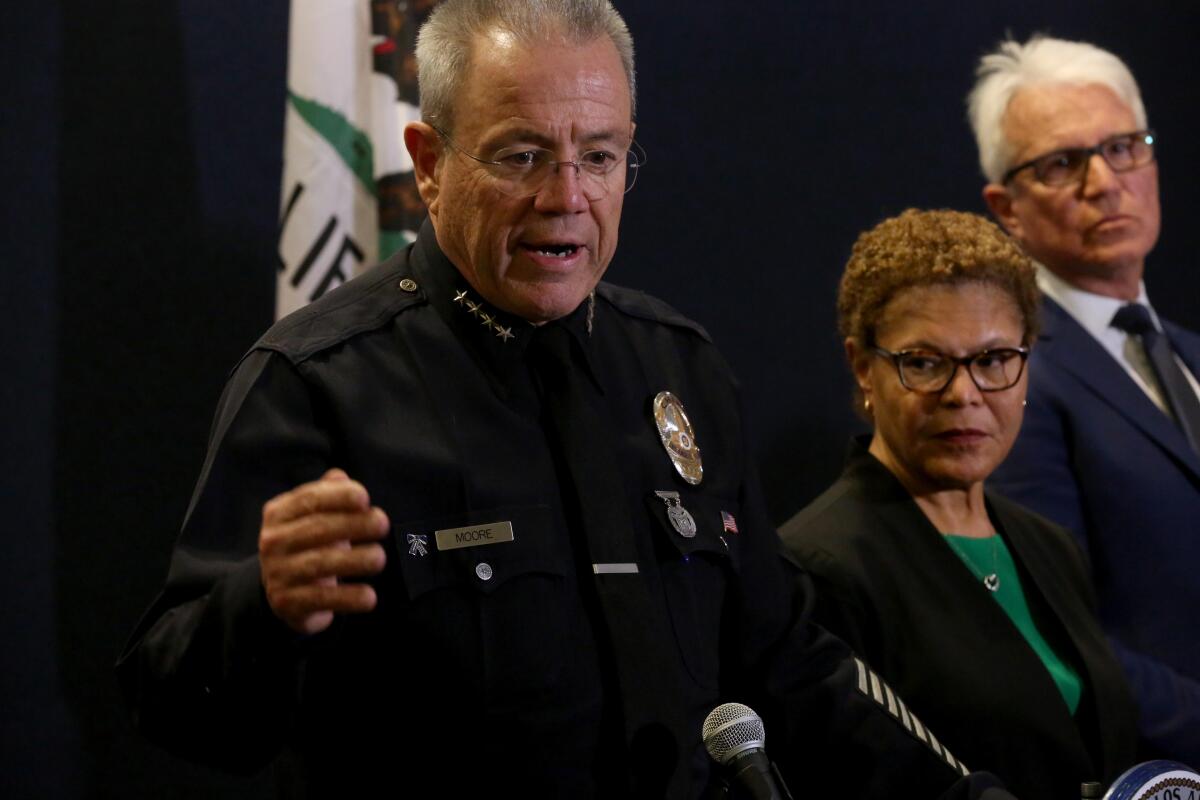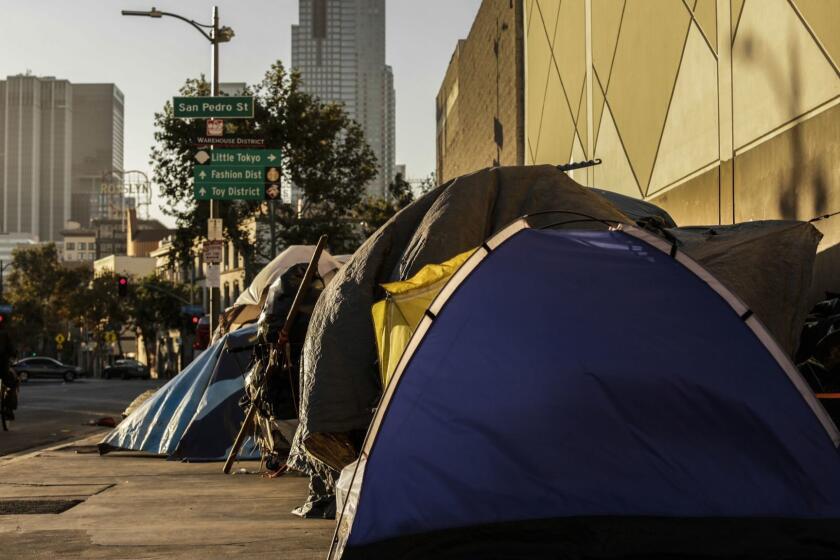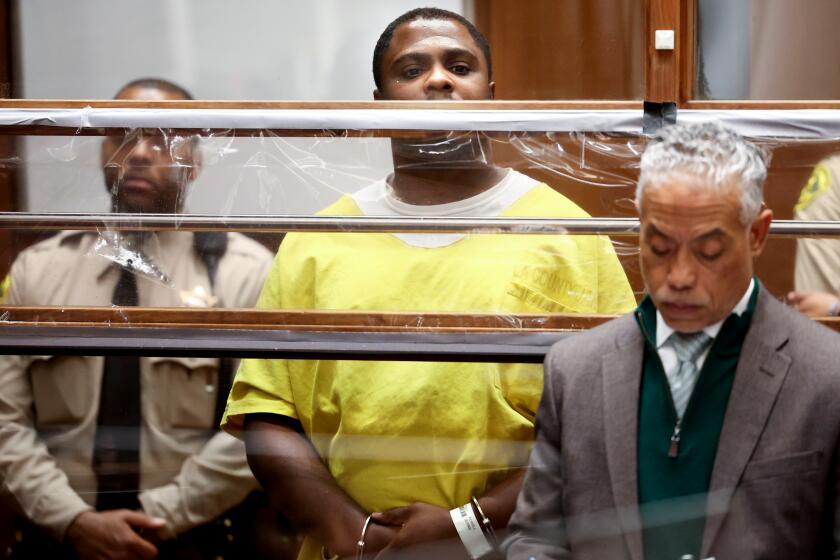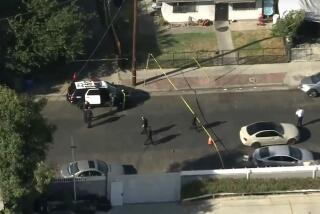Editorial: Murders of three homeless men are a reminder of vulnerability of the unhoused

It’s a relief that police, aided by other law enforcement agencies, swiftly arrested a suspect in the murders of three homeless men in the city of Los Angeles. Police allege that over the course of four days, Nov. 26-29, the suspect, Jerrid Joseph Powell, went from South Los Angeles to the Arts District to the Lincoln Heights area, gunning down men he found alone in the dark hours of the early morning.
Jose Bolanos was sleeping on a couch in an alley. Mark Diggs was leaning against a wall, and a third man, whose identity had not been released pending notification of his family, was sleeping on a sidewalk. Footage that captured the suspect shooting Diggs showed an indifference that Los Angeles Police Chief Michel Moore called “chilling.” Powell, the suspect, had already been arrested in the follow-home robbery and murder of Nicholas Simbolon in San Dimas.
Two men who slept on downtown Los Angeles sidewalks were beaten to death with a bat last month.
Homeless people occupy a precarious position in the city of Los Angeles. According to the 2023 homeless count, some 46,000 people live in alleys, on sidewalks and in other nooks and crannies as well as in shelters. They are often vilified for using the sidewalk as a bathroom, leaving garbage strewn about or parking their RVs on city streets.
Anecdotes abound about violent homeless people. Yet the stories are sometimes more complicated than they seem. A recent tragic incident of a woman forcing her way into the Mid-City home of Michael Latt, a social justice advocate, and killing him turned out to be less a story about her living in her car and more about the fact that the woman, who had been a background actor in a film by an up-and-coming director had obsessively stalked the director, who was friends with Latt, according to law enforcement and court documents.
What gets lost in all the supposition about the homeless population is the undeniable, frightening reality that living on the street makes individuals incredibly vulnerable to violent crimes of all kind, including robbery, assault, rape and murder. No one is more exposed and generally defenseless than a person who sleeps on a sidewalk or in a tent that has no windows or doors that lock. Just the day before the police announced a suspect in the killings in L.A., an assailant shot five homeless people in Las Vegas, killing one, near a freeway overpass.
Jerrid Joseph Powell, 33, was charged with four counts of murder. Prosecutors say he gunned down three homeless men and a robbery victim in a four-day span last week.
Nor is this the first time Los Angeles has seen a string of attacks on homeless people. Los Angeles Police Department records show that violent crimes against homeless victims in the first six months of 2019 went up 34% to 1,239 reported incidents from 922 incidents in the first half of 2018. Those include attacks on unhoused individuals perpetrated by homeless people as well as by people not part of the homeless community. Later in 2019, from August to October, at least eight attacks with incendiary devices left homeless people either dead or injured and their encampments damaged. Some of the culprits were homeless and some were not.
Before a suspect was found in the recent killings, Mayor Karen Bass rightly beseeched the unhoused community, “Do not sleep alone tonight” and urged anyone close to a homeless person to pass along the message to seek shelter and stay together.
There will be violent and nonviolent people in the homeless community, just as there are in the population that lives in houses. What’s important to remember is that homeless people trying to survive are, by their unhoused circumstances, more vulnerable to violence than people living inside. These murders are a grim reminder that homeless people, like the rest of us, need the safety of decent housing.
More to Read
A cure for the common opinion
Get thought-provoking perspectives with our weekly newsletter.
You may occasionally receive promotional content from the Los Angeles Times.












